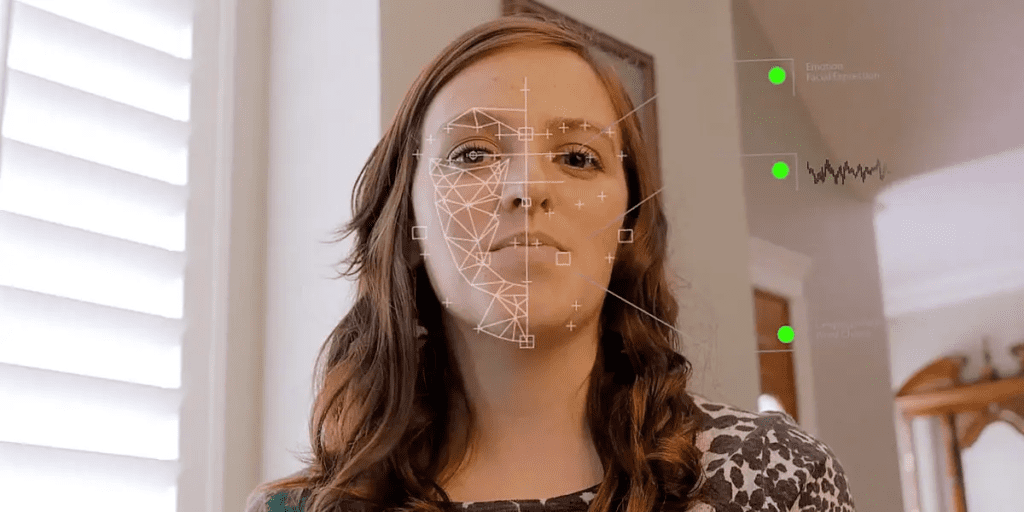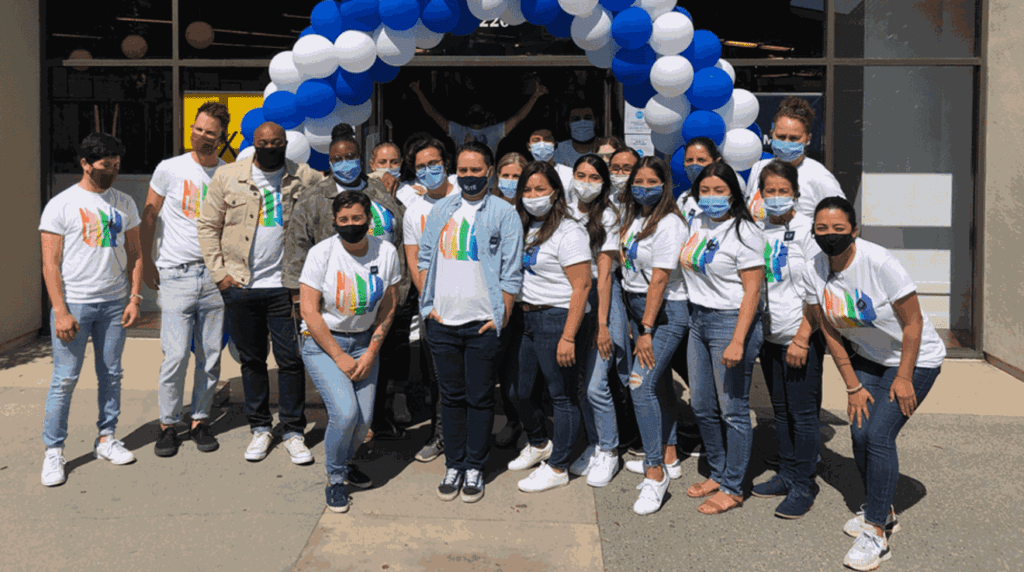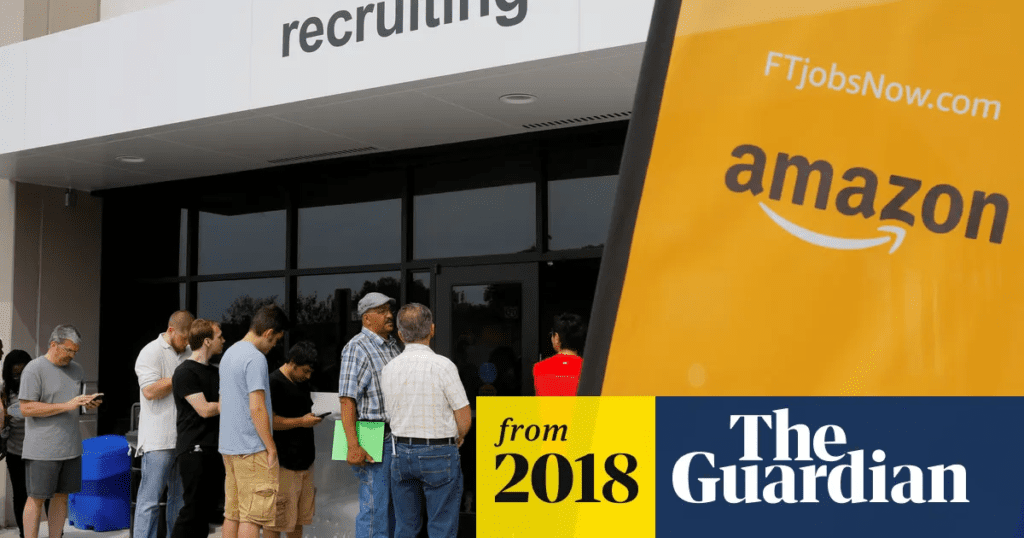Key Takeaways
- AI streamlines recruitment: Discover how AI-powered tools are revolutionizing the hiring process, from resume screening to candidate engagement, saving time and resources.
- Bias reduction and diversity: AI is mitigating unconscious bias in HR, promoting diversity and providing an objective approach to talent acquisition.
- The future of work: Embrace AI’s potential to improve candidate experiences, enhance efficiency, and redefine HR practices in the dynamic landscape of talent acquisition.
In the ever-evolving landscape of human resources and career management, the winds of change are blowing with the force of artificial intelligence, reshaping the very foundations of recruitment and talent acquisition.
Welcome to the frontier where technology meets talent, and the future of work is being rewritten before our eyes.
In this comprehensive guide, we embark on an illuminating journey into the realm of AI and its profound impact on the HR industry.
Whether you’re a seasoned HR professional, a job seeker navigating the competitive job market, or simply an AI enthusiast, this exploration into the transformative power of AI in recruitment promises to be an eye-opening and enlightening experience.
The recruitment and talent acquisition landscape is a vast and complex terrain, where organizations continually seek the best-fit individuals to bolster their ranks and individuals strive to find their ideal career paths.
Traditionally, this process involved manual labor, countless hours of sifting through resumes, scheduling interviews, and making critical hiring decisions.
It was a journey often fraught with challenges, from human biases to resource-intensive procedures.
However, as the 21st century unfolds, a disruptive force is emerging, forever altering the way we approach talent acquisition – artificial intelligence.
Artificial intelligence, or AI, has transcended its status as mere science fiction and has become an integral part of our daily lives.
From self-driving cars to virtual assistants, it’s clear that AI is no longer the future; it’s the present.
But what about the world of HR and career development?
How is AI transforming the way we find, recruit, and retain talent?
This blog delves deep into these questions, providing you with an in-depth understanding of the AI-driven revolution in recruitment and talent acquisition.
AI’s entry into the HR arena has been nothing short of a game-changer.
With its ability to process vast amounts of data, identify patterns, and make data-driven predictions, AI is redefining how companies seek out and select the best candidates.
But it’s not just about data analysis; AI is breathing life into chatbots, virtual recruiters, and interview analysis tools that are streamlining and humanizing the candidate experience.
It’s creating an environment where biases are minimized, efficiency is maximized, and the focus is on what truly matters – finding the right person for the job.
While AI’s role in HR is expanding rapidly, there’s also a flip side to the coin.
Ethical concerns, potential biases in algorithms, and data privacy issues have raised critical questions.
It’s a pivotal moment where we need to strike a balance between technological advancement and human values.
We’ll explore these challenges, confront them head-on, and propose solutions to ensure a responsible and equitable integration of AI in the HR domain.
But that’s just the beginning of our journey.
We’ll also dive into real-life success stories, uncover the companies leading the AI revolution in HR, and show you tangible results that have been achieved.
You’ll discover the skills and knowledge HR professionals need to thrive in this AI-powered landscape, and we’ll provide guidance on how organizations can seamlessly integrate AI into their recruitment processes.
As we embark on this exploration, remember that this is not a mere blog; it’s a comprehensive resource that will empower you with the knowledge and insights to navigate the AI-driven transformation of recruitment and talent acquisition.
The future of work is taking shape before us, and it’s an exciting time to be a part of it.
So, fasten your seatbelts, dear reader.
Let’s embark on this extraordinary journey into the world of AI in HR.
Together, we’ll uncover the secrets, challenges, and boundless potential that AI holds for the future of recruitment and talent acquisition.
Before we venture further into this article, we like to share who we are and what we do.
About 9cv9
9cv9 is a business tech startup based in Singapore and Asia, with a strong presence all over the world.
With over six years of startup and business experience, and being highly involved in connecting with thousands of companies and startups, the 9cv9 team has listed some important learning points in this overview of the guide on How AI Is Transforming Recruitment and Talent Acquisition.
If your company needs recruitment and headhunting services to hire top-quality employees, you can use 9cv9 headhunting and recruitment services to hire top talents and candidates. Find out more here, or send over an email to [email protected].
Or just post 1 free job posting here at 9cv9 Hiring Portal in under 10 minutes.
How AI Is Transforming Recruitment and Talent Acquisition
- The Evolution of Recruitment
- AI-Powered Hiring Tools
- Benefits of AI in Talent Acquisition
- Challenges and Concerns
- Preparing for AI-Driven Recruitment
- The Future of AI in HR
1. The Evolution of Recruitment
Recruitment, as a fundamental aspect of human resources, has witnessed a remarkable transformation over the years.
In this section, we’ll take you on a journey through the stages of recruitment evolution, from traditional methods to the disruptive influence of AI and technology.
Traditional Recruitment Methods
- Manual Paper-Based Processes: In the pre-digital era, recruitment primarily relied on manual processes. Resumes, cover letters, and applications were physically submitted and stored in filing cabinets.
- Newspaper Advertisements: Print media, particularly newspapers, played a pivotal role in job postings. Employers would place advertisements to attract candidates.
- In-Person Networking: Hiring decisions were often influenced by personal networks, referrals, and word of mouth. Building professional relationships was crucial.

Example:
- In the 1980s, job seekers would often search through classified sections of newspapers to identify job openings. Companies would spend significant budgets on print ads, which limited their reach and efficiency.
Rise of Technology in HR
- The Advent of Online Job Portals: With the internet’s widespread adoption, job seekers and employers started utilizing online job portals.
- Applicant Tracking Systems (ATS): ATS software emerged to streamline the application and resume screening process. These systems automated the initial stages of recruitment.
- Email Communication: Electronic mail replaced traditional postal communication, allowing for faster and more efficient communication between candidates and employers.
Example:
- The launch of LinkedIn in 2003 marked a significant shift in professional networking and job searching. It enabled users to create digital profiles and connect with potential employers, opening new avenues for talent acquisition.

The Emergence of AI
- AI in Resume Screening: AI-powered tools analyze resumes for keywords, skills, and qualifications, making the shortlisting process more efficient.
- Chatbots for Initial Contact: AI-driven chatbots on career websites engage with candidates, answer queries, and even schedule interviews, providing a more responsive and user-friendly experience.
- Predictive Analytics: AI is used to predict a candidate’s suitability for a role based on historical data and performance, improving hiring decisions.
Data and Statistics
- According to an article, the average cost-per-hire for companies in the United States is approximately $4,000.
- The use of ATS systems has become pervasive, with 99% of Fortune 500 companies using them for recruitment, as reported by Oracle.
- A survey by Jobvite found that 65% of recruiters consider the lack of skilled candidates as a major challenge in the recruitment process.
- Research reveals that the average length of the interview process in the United States has increased from 12.6 days in 2010 to 22.9 days in 2020.
The evolution of recruitment is a testament to the ever-changing landscape of human resources.
From manual processes to the incorporation of AI, technology has redefined the way we identify, attract, and select the right talent.
As we move forward, the impact of AI in recruitment is poised to grow, offering opportunities for greater efficiency, reduced bias, and improved decision-making.
This dynamic evolution continues to shape the future of work, making it an exciting time for both job seekers and employers.
2. AI-Powered Hiring Tools
In the fast-paced world of recruitment and talent acquisition, AI-powered tools have emerged as game-changers.
These tools leverage artificial intelligence to streamline and enhance various aspects of the hiring process, offering efficiency, objectivity, and insights like never before.
Let’s delve into the world of AI-driven hiring tools and explore how they are revolutionizing the HR landscape.
Resume Screening and Matching
- Automated Resume Parsing: AI algorithms can swiftly parse and extract essential information from resumes, including skills, qualifications, and experience.
- Keyword Analysis: AI tools analyze resumes for specific keywords and phrases, ensuring that candidates meet the job’s requirements.
- Matching Algorithms: These tools compare candidate profiles to job descriptions, ranking applicants based on their suitability.
Example:
- IBM’s Watson Recruitment uses natural language processing and machine learning to analyze resumes and identify top candidates, saving recruiters valuable time and reducing human bias.
Chatbots and Virtual Assistants
- 24/7 Engagement: AI-driven chatbots are available around the clock to interact with candidates, answer queries, and provide information.
- Initial Screening: Chatbots can conduct preliminary interviews, asking candidates basic questions to assess their qualifications.
- Scheduling and Reminders: Virtual assistants help in scheduling interviews, sending reminders, and improving the overall candidate experience.
Predictive Analytics in Recruitment
- Behavioral Analysis: AI tools can analyze past hiring decisions, employee performance data, and other relevant factors to predict a candidate’s potential success in a role.
- Reducing Turnover: Predictive analytics can help identify candidates with a higher likelihood of staying with the company long-term, reducing turnover rates.
- Improved Decision-Making: Recruiters can make data-driven decisions, reducing the chances of hiring mistakes.
Example:
- Pymetrics, an AI platform, uses neuroscience-based games to assess candidates’ cognitive and emotional traits.
Video Interview Analysis
- Facial and Vocal Analysis: AI can analyze candidates’ facial expressions and vocal tone during video interviews to assess their suitability for the role.
- Assessing Soft Skills: This technology can gauge candidates’ soft skills, such as communication and interpersonal abilities.
- Bias Mitigation: AI algorithms aim to reduce human bias in interview evaluations.
Example:
- HireVue is a platform that uses AI to analyze video interviews. By analyzing verbal and non-verbal cues, it aims to identify the best-fit candidates.

Data and Statistics
- According to a report, 96% of organizations believe that using AI in HR can substantially improve talent acquisition.
- According to a report, candidates referred by AI tools were hired at a rate of 30%.
- A survey revealed that nearly two-thirds (63 percent) of respondents say AI has changed the way recruiting is done in their organization.
- LinkedIn’s Global Talent Trends report found that 67% of talent professionals believe AI can save time and find better candidates in the recruiting process.
AI-powered hiring tools represent a revolution in the recruitment and talent acquisition landscape.
They not only accelerate the hiring process but also contribute to greater objectivity and data-driven decision-making.
As organizations continue to embrace AI in HR, these tools are becoming indispensable for staying competitive in attracting and retaining top talent.
The future of recruitment is undeniably intertwined with artificial intelligence, offering unprecedented potential for both candidates and employers.
3. Benefits of AI in Talent Acquisition
Artificial intelligence (AI) has revolutionized the field of talent acquisition, bringing about numerous advantages that have reshaped the way organizations find, recruit, and retain top talent.
In this section, we’ll explore the substantial benefits AI brings to the table in the realm of HR and talent acquisition.
Efficiency and Time Savings
- Faster Screening and Shortlisting: AI-powered tools can process and screen hundreds or even thousands of resumes in a fraction of the time it would take a human recruiter.
- 24/7 Availability: Chatbots and virtual assistants are available round the clock, providing immediate responses to candidate queries and accelerating the application process.
- Reduced Administrative Overhead: Automation of routine administrative tasks like interview scheduling frees up HR professionals to focus on more strategic aspects of talent acquisition.
Example:
- Unilever, a multinational consumer goods company, reported a reduction in its recruitment process from four months to four weeks after implementing AI in its recruitment process.

Improved Candidate Experience
- Enhanced Communication: AI chatbots and virtual assistants provide instant responses to candidate inquiries, improving their experience and engagement with the company.
- Personalization: AI tools can tailor interactions with candidates, offering customized responses and recommendations based on their profiles and preferences.
- Transparency: AI can provide candidates with real-time feedback and updates on their application status, reducing uncertainty and anxiety.
Example:
- Hilton, a global hotel chain, integrated AI-powered chatbots into their recruitment process. This move led to a 40% increase in completed applications and a 50% reduction in candidate queries.
Reduced Bias in Hiring
- Objective Screening: AI evaluates candidates based on predefined criteria, reducing the potential for unconscious bias during the initial screening process.
- Diverse Hiring: AI tools can be programmed to prioritize diversity and inclusion, ensuring a more varied pool of candidates.
- Fair Decision-Making: AI-driven hiring decisions are based on data, minimizing the influence of subjective factors.
Example:
- Gap, an American multinational clothing and accessories retailer, implemented AI tools to reduce bias in hiring.

Better Decision-Making
- Data-Driven Insights: AI provides recruiters with valuable data and insights that aid in making informed hiring decisions.
- Predictive Analytics: AI tools predict a candidate’s potential success in a role based on historical data, helping organizations hire individuals who are more likely to excel.
- Quality of Hire: AI-driven hiring often results in a higher quality of hire, as candidates are matched more precisely to job requirements.
Data and Statistics
- According to a report, 76% of talent professionals believe that AI helps to save time, and 67% believe it increases the efficiency of the recruiting process.
- In an article, employers reported a significant reduction in time-to-fill positions when using AI in recruitment.
- Research found that 33% of surveyed organizations use AI in their talent acquisition processes, with an additional 41% planning to do so in the near future.
- An article reports that organizations using AI in recruitment are 3.5 times more likely to improve their candidate experience.
AI’s impact on talent acquisition is nothing short of transformative.
It brings efficiency, objectivity, and data-driven insights to the recruitment process, enhancing both the candidate and employer experience.
With reduced bias and better decision-making, AI is reshaping the way organizations attract and retain top talent, making it a vital tool in the ever-competitive world of talent acquisition.
4. Challenges and Concerns
While AI has undoubtedly brought about significant advancements in talent acquisition, it’s not without its challenges and concerns.
Understanding and addressing these issues is vital for organizations to harness the full potential of AI in their recruitment processes.
Ethical Considerations in AI Recruitment
- Bias in Algorithms: AI algorithms can inadvertently inherit biases present in historical data, potentially leading to discriminatory hiring decisions.
- Lack of Transparency: The “black box” nature of some AI systems makes it difficult to understand and explain their decision-making process, raising concerns about accountability.
- Data Privacy: Collecting and processing large amounts of personal data during recruitment raises concerns about data privacy and security.
Example:
- Amazon’s AI recruiting tool, which was developed to streamline the hiring process, was abandoned due to bias against female candidates. The system penalized resumes containing the word “women’s,” reflecting gender bias present in the training data.

Potential Biases in Algorithms
- Gender and Ethnic Bias: AI systems can inadvertently perpetuate gender and ethnic biases, favoring one group over another due to imbalanced training data.
- Socioeconomic Bias: AI tools might discriminate against candidates from certain socioeconomic backgrounds based on patterns in historical hiring data.
- Educational Bias: Algorithms may favor candidates from specific educational institutions, which may not necessarily correlate with job performance.
Example:
- A study published found that facial recognition software had higher error rates in classifying the gender of darker-skinned individuals and women compared to lighter-skinned individuals and men.
Data Security and Privacy Issues
- Data Breaches: Storing and processing sensitive candidate data can make organizations vulnerable to data breaches, putting applicants’ personal information at risk.
- Compliance with Regulations: Compliance with data protection regulations like GDPR in Europe and CCPA in California can be challenging when using AI in recruitment.
- Data Ownership: Determining who owns and has access to the data collected during AI-driven recruitment is a complex issue.
Example:
- Clearview AI, a facial recognition software company, faced legal challenges over its data privacy practices and the use of its technology by law enforcement agencies.
Lack of a Human Touch
- Candidate Experience: Overreliance on AI can lead to a lack of personal interaction, potentially diminishing the candidate experience.
- Complex Situational Judgments: AI may struggle to make complex situational judgments that require human intuition and empathy.
- Cultural Fit Assessment: AI tools might find it challenging to assess cultural fit, which is crucial in many organizations.
Example:
- Studies reported that some candidates have expressed frustration with AI-driven hiring processes, feeling that they lack the human touch and empathy that traditional interviews provide.
Data and Statistics
- Research found that facial recognition technology used for hiring can have error rates as high as 34% for darker-skinned women, leading to potential bias.
- A Gartner report wrote that 85% of AI projects will deliver erroneous outcomes due to bias in data, algorithms, or the teams responsible for managing them.
As AI continues to shape the future of talent acquisition, it’s imperative to address the ethical, bias, and privacy concerns associated with its use.
Striking a balance between the advantages of AI and the need for fairness, transparency, and data security is paramount.
Organizations that successfully navigate these challenges will be better positioned to harness the full potential of AI in talent acquisition, ensuring a more equitable and efficient hiring process.
5. Preparing for AI-Driven Recruitment
As AI continues to gain ground in the realm of talent acquisition, organizations and HR professionals must prepare themselves to fully leverage the benefits of AI while addressing potential challenges.
This section delves into essential steps and strategies for effectively navigating the transition to AI-driven recruitment.
Upskilling HR Professionals
- AI Familiarization: HR teams should undergo training to understand the basics of AI, its applications, and its impact on recruitment.
- Data Analytics Skills: Developing proficiency in data analysis is crucial for interpreting AI-generated insights and making data-driven decisions.
- Cybersecurity Awareness: With the increasing use of AI in handling sensitive candidate data, HR professionals should be well-versed in cybersecurity best practices.
Integrating AI with Existing Processes
- AI-Driven ATS: Integrating AI into existing Applicant Tracking Systems (ATS) can enhance the screening and shortlisting of candidates, streamlining the process.
- Collaboration with AI Tools: HR professionals should learn how to collaborate with AI-powered tools like chatbots and virtual assistants to deliver a seamless candidate experience.
- Data Integration: Ensuring that data flows smoothly between AI systems, ATS, and HR software is essential for accurate insights and decision-making.
Example:
- IBM, a pioneer in AI adoption, integrated AI algorithms into their existing ATS, enhancing the efficiency of their recruitment process and reducing time-to-fill.
Finding the Right AI Solutions
- Assessing Needs: Identifying specific recruitment challenges that AI can address, such as improving candidate experience, reducing bias, or speeding up the hiring process.
- Vendor Evaluation: Conduct thorough evaluations of AI solution providers to ensure they align with your organization’s needs and values.
- Customization: Some AI solutions may require customization to fit the unique requirements of your organization.
Addressing Ethical and Bias Concerns
- Algorithm Testing: Regularly assess AI algorithms for biases, particularly related to gender, ethnicity, and socioeconomic factors.
- Bias Mitigation: Develop strategies to mitigate bias in AI systems, such as using diverse training data and providing transparency in the decision-making process.
- Ethics Committee: Establishing an ethics committee to oversee AI usage in recruitment and ensure ethical standards are upheld.
Example:
- Airbnb formed a diversity and belonging team to address bias in their AI algorithms used in the recruitment process. This team played a key role in reducing biases and promoting diversity in hiring.
Data and Statistics
- According to a survey, 66% of CEOs believe that AI will improve their ability to hire and develop talent.
- Research estimates that approximately 50% of current job activities are technically automatable using existing AI and automation technologies.
- A Deloitte report found that 33% of organizations use AI in their talent acquisition processes, and 41% plan to do so in the near future.
- A report predicts that AI will create 12 million more jobs than it will destroy by 2025.
Preparing for AI-driven recruitment is not an option but a necessity in today’s competitive job market.
HR professionals and organizations must equip themselves with the skills, knowledge, and strategies to embrace AI effectively.
By upskilling, integrating AI with existing processes, selecting the right solutions, and addressing ethical concerns, they can ensure a seamless transition to AI-powered talent acquisition.
With the right preparations, organizations can harness the full potential of AI to find the best talent and stay ahead in the ever-evolving world of recruitment.
6. The Future of AI in HR
As technology continues to advance, the role of AI in human resources (HR) is rapidly evolving.
AI-driven tools and applications are poised to reshape HR practices and redefine how organizations manage their workforce.
In this section, we’ll explore the exciting possibilities and potential developments of AI in HR.
Predictions and Trends
- AI in Talent Scouting: AI will play a more prominent role in talent scouting and passive candidate sourcing, identifying potential candidates proactively.
- AI-Enhanced Decision Support: HR professionals will increasingly rely on AI-driven data and analytics for decision-making, including talent development and retention strategies.
- Advanced Chatbots: Chatbots and virtual assistants will become more sophisticated, handling complex HR inquiries and providing personalized guidance to employees.
- AI in Employee Engagement: AI will be utilized to monitor employee engagement, gather feedback, and recommend strategies for improving workplace satisfaction.
Potential Developments in AI Technology
- Conversational AI: Improved natural language processing (NLP) will make conversational AI even more conversational, understanding context and tone in employee interactions.
- Augmented Reality (AR) and Virtual Reality (VR): AR and VR will be used for immersive training and onboarding experiences, enhancing employee learning and development.
- AI-Enhanced Diversity and Inclusion: AI algorithms will play a crucial role in identifying and addressing diversity and inclusion gaps in the workplace.
- AI-Driven Coaching and Mentoring: AI will offer personalized coaching and mentoring recommendations, helping employees reach their full potential.
Its Impact on the Job Market
- New Job Roles: The integration of AI in HR will create new job roles, such as AI ethics officers, HR data analysts, and AI system trainers.
- Reskilling and Upskilling: As AI takes over certain HR tasks, there will be a growing need for reskilling and upskilling HR professionals to manage AI-driven systems.
- Job Market Shift: The job market itself will change as AI-driven tools become more prevalent, requiring job seekers to adapt and possess relevant skills.
Data and Statistics
- Studies predict that by 2030, AI could contribute up to $15.7 trillion to the global economy, with HR and recruiting being among the sectors that benefit.
- A survey by Deloitte found that 33% of organizations already use AI in their talent acquisition processes, with 41% planning to do so in the near future.
- In a survey, 73.3% of HR leaders reported that they have already deployed AI in some form in their HR processes.
The future of AI in HR is a promising and transformative landscape.
AI-driven tools are set to redefine how HR professionals engage with candidates, support employee development, and shape workplace environments.
While challenges and ethical considerations will remain, the potential benefits of AI in HR are immense.
Organizations that embrace this technological evolution and prepare their HR teams for the future will be better positioned to adapt to the changing world of work and stay ahead in the competitive talent market.
Conclusion
The winds of change are sweeping through the world of recruitment and talent acquisition, and at the forefront of this transformation stands the formidable force of artificial intelligence (AI).
In this journey through the AI-driven landscape of HR, we’ve explored how technology is reshaping the way we seek, attract, and retain the best talent.
As we reach the conclusion of this illuminating exploration, it’s clear that AI is not just a trend; it’s a pivotal force in the future of work.
The traditional methods of sifting through stacks of resumes, scheduling interviews, and making hiring decisions are evolving into a streamlined and efficient process, thanks to AI.
We’ve witnessed how AI-driven tools can swiftly parse resumes, match candidates with job descriptions, and even conduct initial interviews, saving organizations time and resources.
The days of paper-based recruitment are fading into memory, replaced by the digital age of smart algorithms and data-driven decisions.
But AI’s impact doesn’t stop at efficiency.
It extends to improving the candidate experience.
Chatbots and virtual assistants, available 24/7, are providing candidates with instant responses and personalized interactions, redefining the way they engage with potential employers.
The future of work is not just about finding the right fit for the job; it’s about creating a seamless and satisfying experience for job seekers.
Crucially, AI is poised to address one of the most persistent challenges in recruitment: bias.
With the ability to make objective decisions based on data and algorithms, AI is reducing the impact of unconscious biases that have plagued traditional hiring processes.
It’s facilitating diversity and inclusion by providing a level playing field for all candidates.
AI-driven recruitment isn’t without its challenges and concerns.
Ethical considerations, algorithmic biases, data privacy issues, and the potential loss of a human touch are all issues that organizations need to navigate.
However, as we’ve seen in the examples and data shared throughout this journey, many organizations are actively working to address these concerns and find solutions that align with their values and goals.
As we look to the future, the potential developments in AI technology are thrilling.
Conversational AI, augmented and virtual reality, and AI-enhanced coaching and mentoring are on the horizon.
These innovations promise to create even more engaging and immersive experiences for candidates and employees.
The job market itself is evolving, with new roles emerging, and a growing need for reskilling and upskilling.
The synergy between AI and human expertise will define the future of work, and those who adapt will thrive.
In conclusion, AI is not just transforming recruitment and talent acquisition; it’s revolutionizing the entire HR landscape. It’s enhancing efficiency, objectivity, and data-driven insights.
It’s redefining how organizations find the right talent, while ensuring that candidates have a more satisfying journey. The future of work is bright, and AI is at its heart, offering unprecedented potential for both employers and job seekers.
As you prepare for the future of AI in HR, remember that knowledge and adaptability are your allies.
Equip your HR teams with the skills and understanding to effectively utilize AI tools.
Integrate AI into your existing processes, select the right solutions, and address ethical and bias concerns.
With the right preparations, you can embrace the AI revolution and ensure your organization remains competitive in the dynamic world of talent acquisition.
So, as you embark on this AI-driven journey, remember that the future is bright, the possibilities are vast, and the potential for transformation is boundless.
The next generation of talent acquisition is here, and AI is leading the way.
It’s not just a technological shift; it’s a cultural transformation that promises to shape the workforce of tomorrow.
Embrace it, navigate the challenges, and seize the opportunities – the future of recruitment and talent acquisition is, indeed, a thrilling one.
If your company needs HR, hiring, or corporate services, you can use 9cv9 hiring and recruitment services. Book a consultation slot here, or send over an email to [email protected].
If you find this article useful, why not share it with your hiring manager and C-level suite friends and also leave a nice comment below?
We, at the 9cv9 Research Team, strive to bring the latest and most meaningful data, guides, and statistics to your doorstep.
To get access to top-quality guides, click over to 9cv9 Blog.
People Also Ask
What will AI do to the recruitment industry?
AI is revolutionizing the recruitment industry by streamlining processes, reducing bias, and enhancing candidate experiences. It will make hiring faster, more efficient, and promote diversity, ultimately shaping the future of talent acquisition.
How AI is revolutionizing recruitment?
AI is revolutionizing recruitment by automating repetitive tasks, enhancing candidate screening, reducing bias, and improving the overall hiring experience. It accelerates decision-making and provides data-driven insights, transforming how organizations attract and retain talent.
How AI is transforming talent acquisition?
AI transforms talent acquisition by speeding up hiring processes, eliminating bias, and enhancing candidate engagement. It empowers HR professionals with data-driven insights, making recruitment more efficient and effective. The result is a more streamlined and inclusive approach to finding the right talent.































![Writing A Good CV [6 Tips To Improve Your CV] 6 Tips To Improve Your CV](https://blog.9cv9.com/wp-content/uploads/2020/06/2020-06-02-2-100x70.png)


